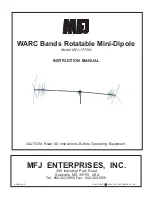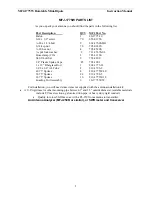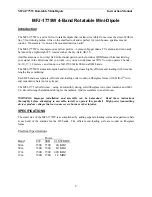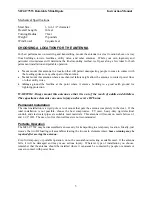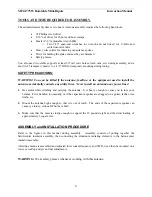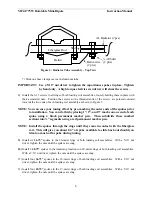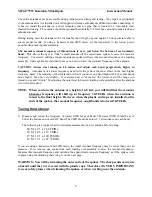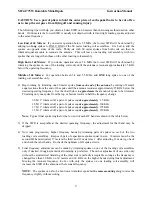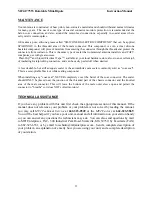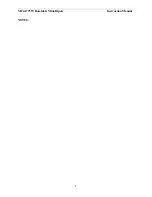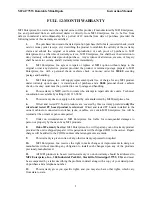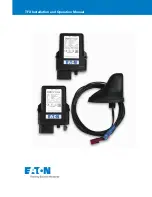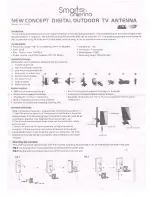
MFJ-1775W Rotatable Mini-Dipole
Instruction Manual
8
The entire antenna must be accessible during initial coarse tuning and testing. Any repair or adjustment
to the antenna after it is installed on a tall support will make adjustments difficult and time consuming. It
is best to install the antenna on a short temporary mast or pipe that is located in a reasonably clear
location for tuning. The antenna should be mounted horizontally 6-8 feet above ground to make tests and
adjustments easy.
During tuning, feed the antenna with a reasonably short length of good quality 50 ohm coaxial cable to
ensure proper results. If using a transceiver and SWR meter, set the transceiver to the lowest power
possible when making measurements.
The normal resonant frequency of this antenna is at or just below the bottom of each amateur
band.
This allows the user to "trim" a small amount off the capacitance spokes to raise the resonant
frequency. Conversely, adding a longer capacitance spoke will lower the resonant frequency of a loading
assembly. Spare spokes are included in case you need to lower the resonant frequency of the antenna.
CAUTION
:
Always start tuning on 60 meters and adjust each band progressively higher in
frequency
. Adjustment of a lower frequency band will always have the most effect on the next higher
frequency band. The tendency of the interaction is that if you move one band higher ALL the other bands
move higher, but only very slightly. It is always best to "shoot for" the lowest end of the range you
intend to use and "trim in" by adjusting the outermost (60 meter) loading coil assemblies after the antenna
is in its final location.
NOTE: When you tune the antenna at a height of 6-8 feet, you will find that the resonant
60 meter frequency will shift up in frequency 30-50 kHz when the antenna is
raised to the final height. However, when the plastic end caps are installed on the
ends of the spokes, the resonant frequency on all bands is lowered 30-50 kHz
Tuning the Antenna
1)
Measure and record the frequency of lowest SWR for each band. The lowest SWR should be at or
below the bottom end of each HF band. The SWR should be below 2:1 at resonance on each band.
The following is a typical chart for initial measurements of a new antenna before tuning:
60 M 1.7:1 at 6.99 MHz
30 M 1.2:1 at 13.9 MHz
17 M 1.2:1 at 20.85 MHz
12 M 1.7:1 at 27.97 MHz
If you are using a transceiver and SWR meter, the initial resonant frequency may be lower than you can
measure. If so, remove one spoke from each loading coil assembly to raise the resonant frequency.
Measure this resonant frequency and calculate the approximate resonant frequency as if the spokes were
in place using the trimming chart (step 2) on the next page.
WARNING: You will be trimming the outer ends of the spokes. The sharp sends can cause
a hazard until they are covered with the plastic caps. Therefore it is VERY IMPORTANT
to wear safety glasses when trimming the spokes, or when working near the antenna.

